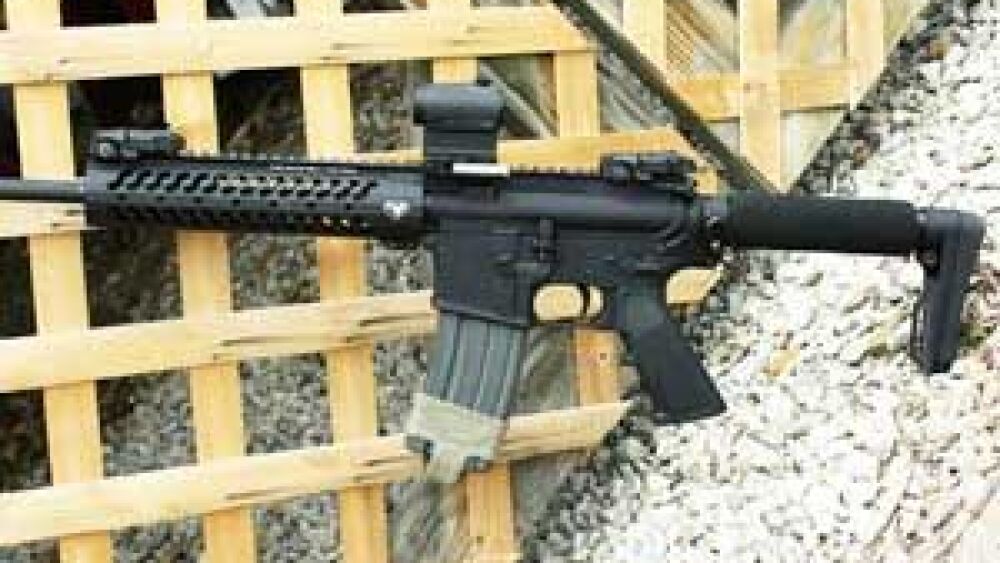By Richard Fairburn, C1 Contributor
My first patrol rifle was an original Colt AR-15, model SP1, which weighed about seven pounds with a loaded 30 round magazine and GI carrying strap. Other than swapping out the original triangular handguards, it was strictly as-issued.
With younger eyes and a trigger smoothed out by thousands of shots, it would approach minute-of-angle accuracy with match-grade ammo fired from the prone position and a tight sling — well, when I did my part.
That rifle never malfunctioned with good ammo, even when it was very dusty from thousands of patrol miles in Wyoming backcountry.
Evolution of the M4
When I wrote “Patrol Rifles” more than 20 years ago, flat-top ARs meant for optical sights were just starting to appear on the market. The M4 variants we have today are far more sophisticated, but often, those Picatinny rails tempt us to load ‘em up with all sorts of accessories — adding to the weight and potentially degrading the weapon’s overall usefulness.
I currently have a Colt M4 Advanced Law Enforcement Carbine (ALEC- Model 6940) that produces ½ MOA accuracy and is set up as a Designated Marksman carbine, complete with a Leupold 1-6x scope, a Harris bipod, and a long-range LED light.
It weighs more than 10 pounds fully loaded, which I consider too heavy for Patrol or CQB use.
At the ILEETA Conference earlier this year, theDoublestar representative handed me their lightest AR — the Constant Carry model.
What a breath of fresh air.
Less Really Can Be More
The bare rifle weighs in at five pounds and 13 ounces on my scale. When fully fitted for patrol use, with an Aimpoint Micro T1 red dot sight, a Streamlight TLR-1 LED light, and a loaded 30 round magazine, it weighs just under seven and a half pounds — about the same as my trusty old SP1.
The barrel on the Constant Carry is rather spindly, compared to a beefy M4 barrel, so I was most interested in how well it would hold point of aim and grouping as it heated. Any unresolved stress introduced during manufacture can cause problems as barrels get hot.
The Constant Carry showed no such problems when fired for several rapid-fire groups. The accuracy remained consistent, and the point of aim “wandered” within normal tolerances — two groups from a rifle rarely fall exactly on top of each other.
In terms of accuracy, the Constant Carry is not a tack driver, averaging a little over two-inch groups at 100 yards (using a Leupold scope on 6x and the typically lousy mil-spec trigger system). But it is plenty good enough for its intended patrol mission.
With a 1/9 rifling twist, the carbine will handle any bullet weight, but gave the best groups with 50-55 grain loads. Interestingly, it seemed to have little preference between ball and match-grade loads.
One way the Constant Carry saves weight is with the use of a fixed-length buttstock. The test rifle had the shorty stock, about the normal length of a collapsed adjustable stock. For another ounce or so of weight you can specify the longer version, which is similar to the length of a fully extended collapsible stock.
Either stock can be adjusted a half inch by swapping rubberized buttplates.
Competitive shooters prefer a longer stock, but working cops and tactical officers understand the need for a shorter stock, especially when wearing a good deal of gear or clothing. With long-eye relief sights like the Aimpoint Micro — which can be mounted well forward — a short stock is the best choice.
The Constant Carry comes with a single-point sling connection point and small sections of Picatinny rail which can be mounted at various points on the slim, aluminum handguards for adding practical gadgets like lights and foregrips. The carbine comes standard with a full-length top rail, which allows greater flexibility in mounting optics.
The test rifle carried Magpul flip-up backup iron sights and carried a MSRP of $1,720 — about on par with similar custom builders.
You can certainly pay less for an AR carbine, but they will probably be substantially heavier — a wise officer doesn’t buy their fighting rifles priced by the pound.












